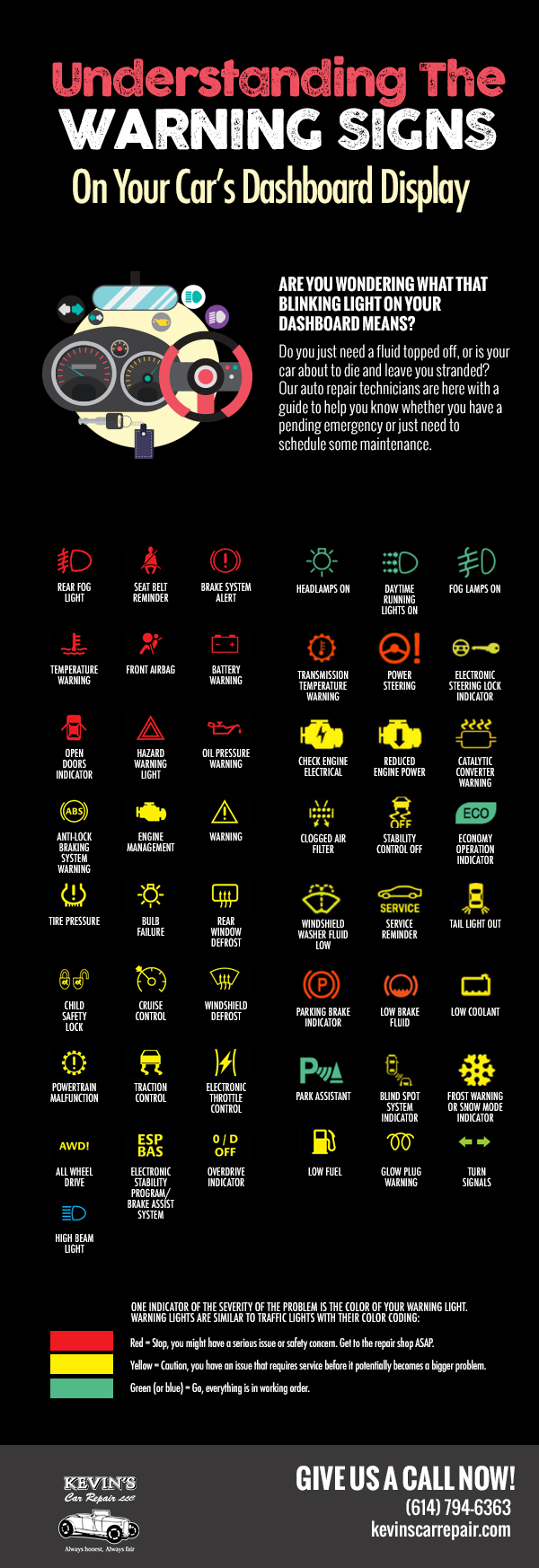Comprehending The Significance Of Your Auto'S Warning Signals: What They In Fact Represent
Comprehending The Significance Of Your Auto'S Warning Signals: What They In Fact Represent
Blog Article
Article Developed By-Faulkner Kejser
When you're behind the wheel, those glowing caution lights on your control panel can be a little bit complicated. Do you understand what they're trying to inform you regarding your cars and truck's wellness? Understanding the value of these lights is important for your safety and the longevity of your automobile. So, the next time one of those lights appears, wouldn't you intend to decipher its message accurately and take the necessary steps to address it?
Common Caution Lights and Interpretations
Identify typical warning lights in your auto and recognize their definitions to ensure safe driving.
The most typical caution lights consist of the check engine light, which signifies problems with the engine or discharges system. If this light begins, it's important to have your car checked promptly.
The oil pressure warning light indicates reduced oil pressure, requiring prompt interest to stop engine damage.
A flashing battery light could suggest a malfunctioning charging system, potentially leaving you stranded if not addressed.
detailing vans for sale tracking system (TPMS) light signals you to low tire pressure, impacting vehicle security and gas efficiency. Ignoring this might cause hazardous driving problems.
The ABS light indicates a problem with the anti-lock stopping system, endangering your capability to stop swiftly in emergency situations.
Last but not least, the coolant temperature level warning light warns of engine overheating, which can lead to severe damage if not settled quickly.
Recognizing these usual warning lights will aid you resolve issues quickly and keep safe driving problems.
Significance of Prompt Attention
Comprehending the usual caution lights in your cars and truck is just the primary step; the relevance of quickly addressing these cautions can't be emphasized sufficient to guarantee your safety and security when traveling.
When https://www.thedrive.com/news/russian-auto-industry-hit-so-hard-its-reviving-a-25-year-old-lada brightens on your dashboard, it's your auto's means of connecting a possible issue that requires attention. Neglecting these warnings can lead to more severe problems later on, compromising your security and potentially costing you much more out of commission.
Motivate focus to warning lights can prevent malfunctions and mishaps. For car wash interior cleaning , a blinking check engine light might show a misfire that, if left neglected, can create damages to the catalytic converter. Resolving this without delay can save you from a pricey repair service.
In a similar way, a brake system alerting light might indicate reduced brake liquid or used brake pads, vital parts for your safety and security when driving.
Do It Yourself Troubleshooting Tips
If you observe a warning light on your control panel, there are a few DIY troubleshooting pointers you can attempt prior to seeking expert aid.
The first step is to consult your vehicle's manual to comprehend what the particular warning light shows. In some cases the issue can be as basic as a loose gas cap setting off the check engine light. Tightening up the gas cap may fix the trouble.
An additional usual issue is a reduced battery, which can cause numerous cautioning lights. Checking the battery connections for corrosion and guaranteeing they're safe and secure may repair the issue.
If a warning light lingers, you can try resetting it by detaching the automobile's battery for a few minutes and after that reconnecting it. In addition, examining your lorry's fluid degrees, such as oil, coolant, and brake fluid, can assist troubleshoot alerting lights associated with these systems.
Final thought
To conclude, understanding your car's warning lights is vital for maintaining your vehicle running efficiently and safely. By quickly addressing these notifies and understanding what they imply, you can prevent costly repair work and prospective breakdowns.
Bear in mind to consult your vehicle's handbook for specific information on each alerting light and act appropriately to ensure a hassle-free driving experience.
Keep informed, stay secure on the road!
